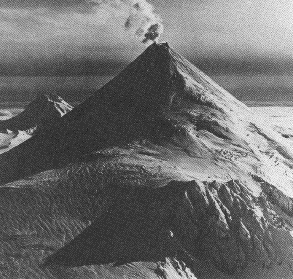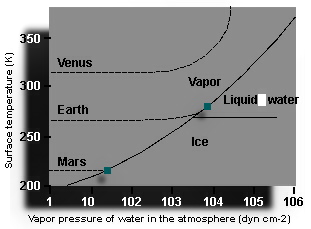HISTORY OF THE ATMOSPHERE
After Earth formed 4.5 Byr ago, gases accumulated from volcanism and comet impacts.
Volcanic gases are very different than the present atmosphere: mostly H2O (85%) and CO2 (10%), with some nitrogen and sulfur. So the early atmosphere was probably H2O and CO2 with a bit of nitrogen. Comets – more common then — probably contributed significant H2O.
H2O and CO2 are efficient greenhouse gases, so 4 Byr ago the earth was MUCH hotter than today.
HOW DID THE PRIMEVAL ATMOSPHERE EVOLVE TO TODAY’S?
1. Water vapor removed from the atmosphere by precipitation, ending up in oceans, lakes, etc.
2. CO2 removed by dissolving into rain which reacted to form carbon compounds in rocks. CO2 is also removed by dissolving into the oceans .
3. Later (about 2 Byr ago), photosynthesis from plants removed more carbon dioxide into plants, and added oxygen.
Thus:
- Atmosphere became MUCH less dense, as H2O and CO2 were removed.
- Nitrogen (a trace gas from volcanic eruptions) became the most abundant gas.
- Oxygen became a major constituent
- So RAIN moved most of the atmosphere to the Earth’s surface, and LIFE (green plants) ‘contaminated’ the atmosphere with oxygen.
PRESENT EARTH’S ATMOSPHERE:
Nitrogen – 78%
Oxygen – 21%
Carbon Dioxide – 0.03%
Water Vapor – 0% – 4%
Argon – 0.9%
Trace Gases (Ne, He, krypton, H2, ozone)
This composition persists due to the continuing effects of PLATE TECTONICS (volcanism), RAIN, and LIFE, but requires temperatures such that LIQUID WATER EXISTS —NOT TOO HOT, NOT TOO COLD.
(Univ. of Michigan, U. of Maryland)

